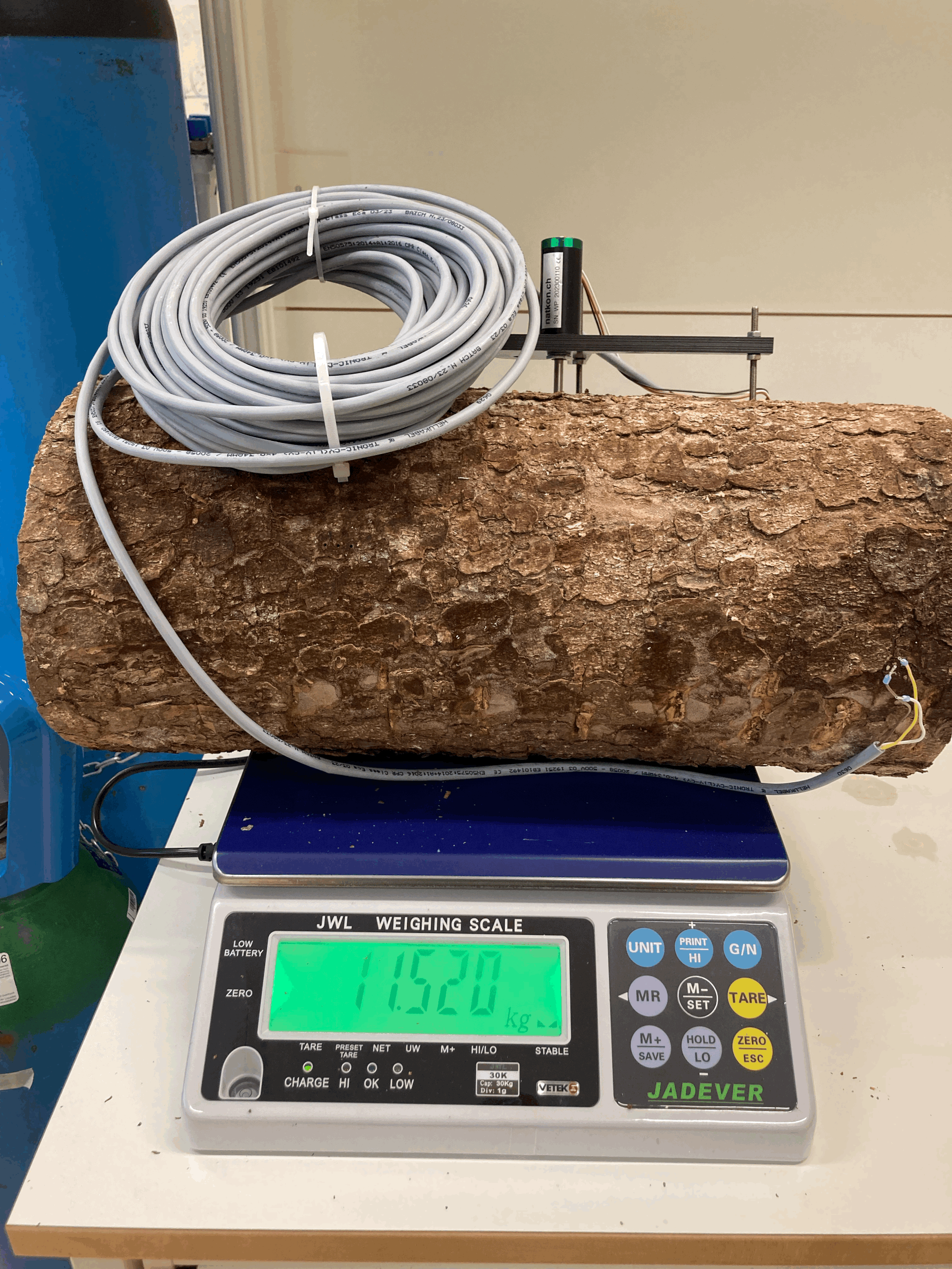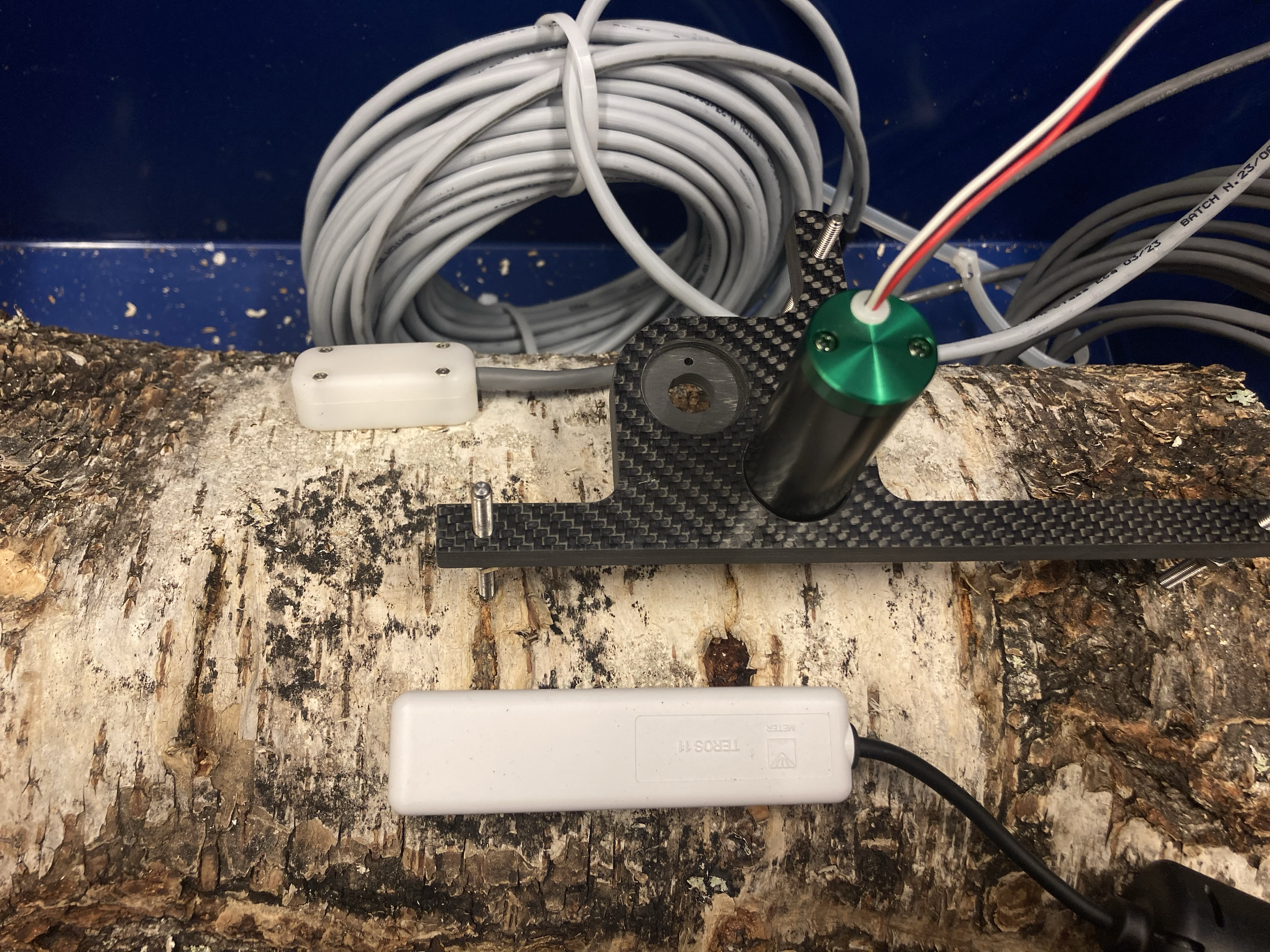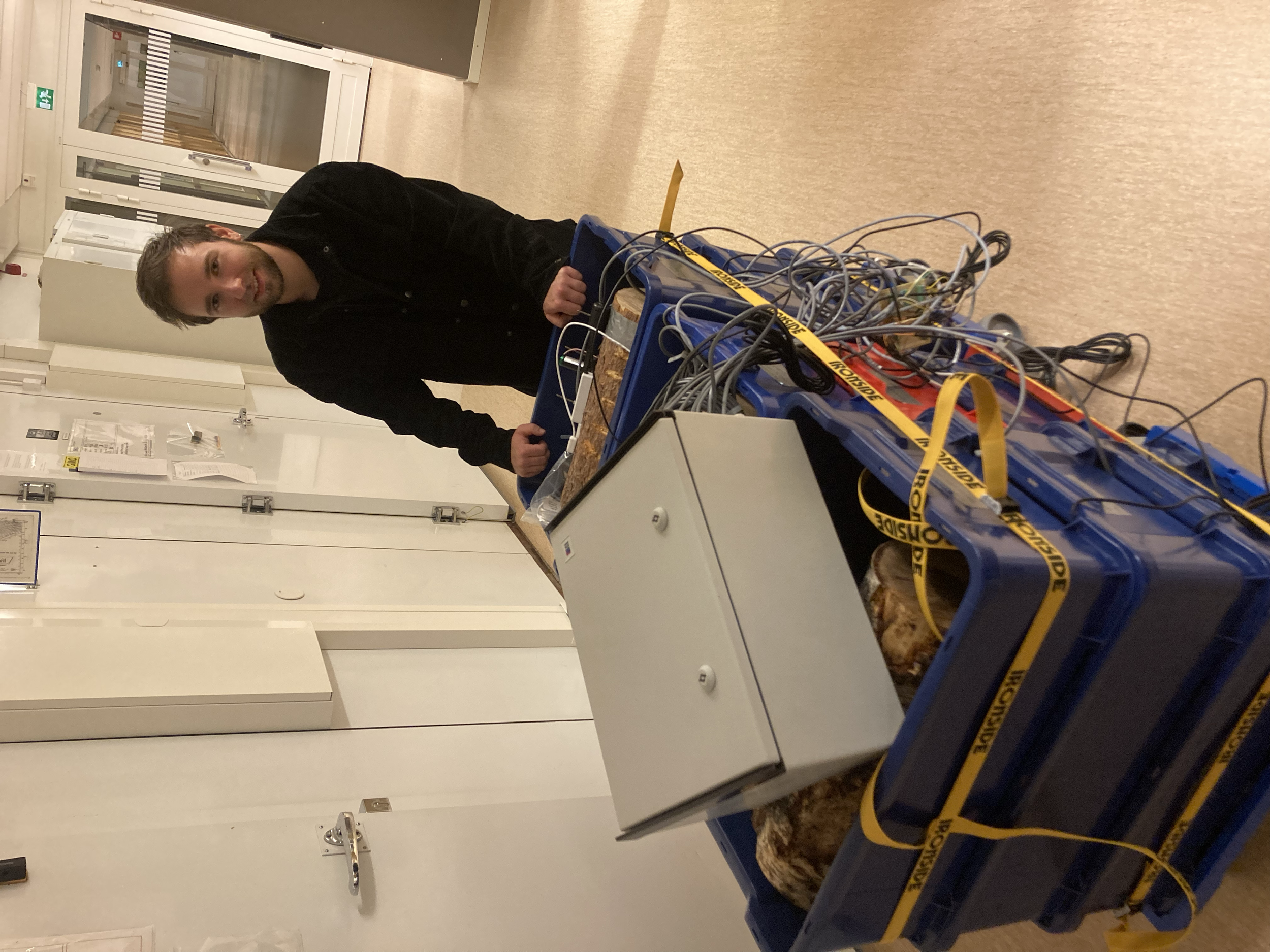
Tree water content based on water dielectric and thermal properties
Project info
Status: Active
Span: 2014-2027
Location: Svartberget Research Station, Vindeln, Sweden
Contact: Jose Gutierrez Lopez (Jose.Lopez@slu.se)
Summary
Water content in green stems (living trees) is a growing field. However, it is really difficult to have reliable measurements. Partially because we don’t really have a sensor dedicated for its measurement. Given that it is used in many other measurements, such as sap flow, remote sensing, etc., we often use other sensors for its measurement. In broad terms, there are two major types of sensors used for this purpose: thermometric, and dielectric sensors. The dielectric sensors can be split into various types such as frequency domain or time domain. In this project, we are validating both thermometric and frequency domain sensors. Our goal is to generate reliable equations capable of estimating volumetric water content in living stems of three major boreal species: Norway spruce (Picea abies), Scots pine (Pinus sylvestris) and Silver birch (Betula pendula). An additional area of study in our project, is the effect of freezing and thawing cycles on water content measurements. Thermometric and time/frequency domain sensors fail during the phase change of water-ice. However, we are developing a series of equations that would correct these measurements.
A 3D modelling of stem water content in boreal forests
This project is linked to our Radar Study (see BorealScat2), where one of our goals is to build a three dimensional modelling of the water in vegetation, primarily stems, branches and leaves. In the first stage of this project, we are targeting large tissues (i.e., mainly stems and branches). To achieve this, we are monitoring stem water content using capacitance sensors at 1.3, 8 and 15 m from the ground. We measure these sensors every 30 minutes, and used them to build a 3D image of the water in the forest.
In the next stages of this project, we will focus on radial profiles of water content (currently doing Lab tests).
The BorealScat2 radar
BorealScat is a tower-based radar project where we are aiming at acquiring polarimetric and tomographic radar measurements at P-, L- and C-band over a mixed forest in Northern Sweden. The experiment consists of a 50 m-high tower equipped with a radar system including 30 antennas, and a vast array ot tree-level measurements to extract three-dimensional water transport and water content. The site is also equipped with meteorological instruments and moisture sensors. The primary aim of the radar tower infrastructure is to understand the relationship between forest water dynamics and radar observations and to investigate possibilities for measuring variables related to forest tree-water relations using spaceborne synthetic aperture radars (SARs). Multi-polarimetric forest backscatter is resolved at different heights using tomography at P-band (435 MHz), UHF-band (600 MHz) and L-band (1270 MHz). Tree-level measurements include sap flow and stem water content at three heights (1.3, 8 and 15 m).
Listen to Albert Monteith (Chalmers) describe the importance of monitoring tree water content.
A global network of environmental sensors: The ICOS Network
This project is being conducted under the footprint of the ICOS (Integrated Carbon Observatory System) tower. Our ICOS tower (actually a mast) is a 150 m tower with a vast array of environmental and ecosystems sensors. While its focus is on carbon fluxes, the tower is equipped with a comprehensive set of sensors. See the full list of atmospheric, and ecosystem variables. This means that our measurements, and the models we adjust from them, are scalable to other sites where the ICOS network exists.
Image gallery
Installation of water content sensors at 1.3 and 8 m from ground level. Video credit: Wei-Ling Chen (former Research Specialist)











